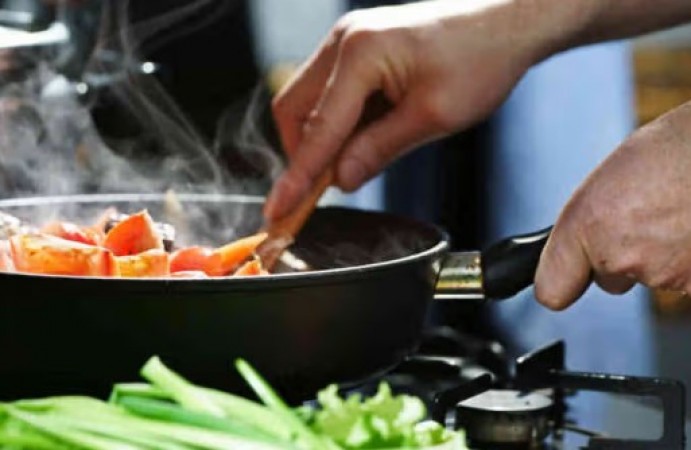
Cooking is an art, and the choice of cookware significantly impacts the quality and safety of the food we prepare. Non-stick cookware has gained immense popularity due to its convenience and ease of cleaning. However, recent findings from the Indian Council of Medical Research (ICMR) shed light on the potential health hazards associated with cooking in non-stick utensils. Let's delve into why this seemingly convenient choice might not be the safest option after all.
Non-stick cookware, coated with a layer of polytetrafluoroethylene (PTFE) or Teflon, offers several advantages. Its slick surface prevents food from sticking, making cooking and cleaning a breeze. Additionally, it requires less oil or fat for cooking, promoting healthier eating habits. These qualities have made non-stick cookware a staple in many kitchens worldwide.
While non-stick cookware may seem like a convenient option, it harbors a hidden danger in the form of perfluorooctanoic acid (PFOA). PFOA is a synthetic chemical used in the manufacturing process of Teflon and other non-stick coatings. Studies have linked PFOA exposure to various health issues, including cancer, thyroid disorders, infertility, and developmental problems in children.
PFOA is classified as a potential carcinogen by several health organizations, including the International Agency for Research on Cancer (IARC). PFOA exposure has been linked to an increased risk of kidney and testicular cancer, among other malignancies. Furthermore, it may disrupt hormonal balance, leading to reproductive issues and developmental abnormalities in fetuses and infants.
Another concern with non-stick cookware is the risk of overheating. When subjected to high temperatures, non-stick coatings can release toxic fumes containing PFOA and other harmful chemicals. These fumes can cause flu-like symptoms in humans, known as polymer fume fever, and pose a severe threat to pet birds, often resulting in fatal respiratory distress.
Given the potential health risks associated with non-stick cookware, it's essential to explore safer alternatives for cooking. Stainless steel, cast iron, ceramic, and glass cookware are excellent alternatives that do not pose the same health concerns. While they may require a bit more effort in terms of cleaning, the peace of mind knowing you're not exposing yourself to harmful chemicals is well worth it.
Regardless of the cookware you use, practicing safe cooking habits can minimize potential health risks:
While non-stick cookware offers convenience, it comes with potential health risks due to the presence of chemicals like PFOA. Opting for safer alternatives and practicing proper cooking habits can help minimize these risks and promote healthier cooking practices for you and your family.
Lights, Camera, Controversy: Kangana's Election Run and Film Holdup
Alia Bhatt Makes a Stylish Splash at Gucci Cruise 2025 Show in London
Bollywood Star Joins Cast of Dune Prequel Series 'Dune: Prophecy'; Meet the New Addition